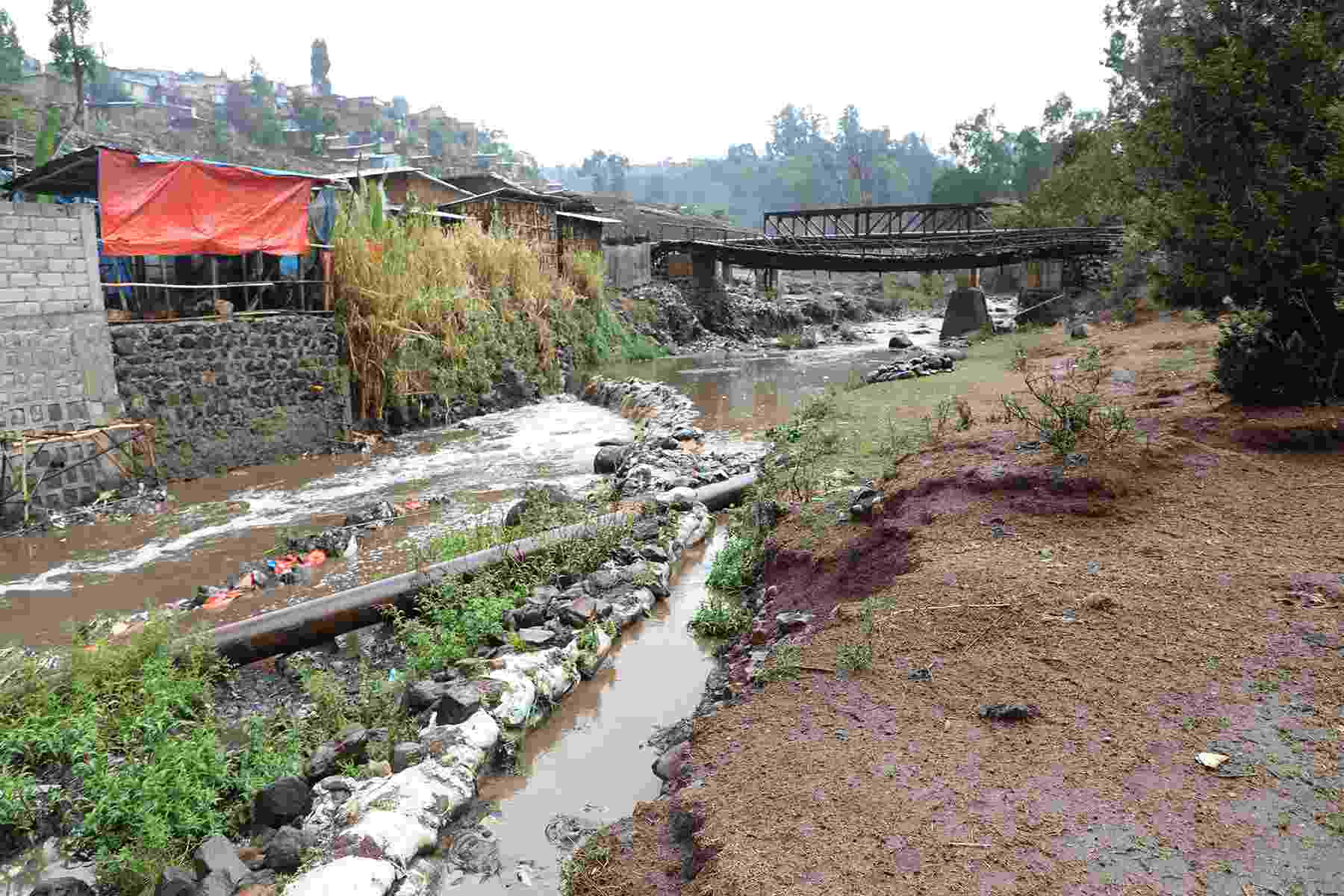An integrated approach for water quality assessment in African catchments based on physico-chemical and biological indicators
08 November 2023


Urban water pollution, Addis Ababa
Authors: Bitew K. Dessie, Minbale Aschale, Xanthe Polaine, Samuel Melaku, Tena Alamirew, Claire L. Walsh, David Werner, Gete Zeleke
Rapid urbanization, industrialization, and population growth pose major threats to the ambient water quality, indicator 6.3.2 of the United Nations Sustainable Development Goal (SDG) 6, in African catchments. One example is the catchment of the Akaki Rivers that flow through Ethiopia's capital, Addis Ababa. The objective of this study was to demonstrate a monitoring approach for assessing the physico-chemical and ecological health status of African Rivers using locally available expertise and analytical capabilities. Representative water samples were collected from twenty-three different sampling locations in the Akaki catchment for various physico-chemical measurements. A biological assessment was conducted using the mini-stream assessment scoring system (miniSASS) tool. Principal component analysis (PCA) was applied to assess variations in water quality.
The study revealed notable differences in water quality between the Little Akaki River, which flows through the city center of Addis Ababa, and the Big Akaki River, which flows mostly through the peri-urban fringe of Addis Ababa. PCA revealed higher levels of water quality parameters in the Little than in the Big Akaki River. For the Little Akaki River, except for pH, all of the measured parameters had significant seasonal variation. In contrast, for the Big Akaki River, no significant seasonal variation was observed in the measured parameters. Downstream of Addis Ababa, improvement in water quality was observed to most of the measured parameters and during all of the seasons where the Akaki Rivers pass through rural areas. There were no significant correlations between physico-chemical measurements and miniSASS scores. The study thus showed that monitoring physico-chemical parameters alone may be insufficient and biological monitoring should be included. Application of these methods and analysis of the results can help catchment scale monitoring of freshwater quality on the African continent.
Highlights:
- A biological assessment was conducted using miniSASS tool.
- The concentrations of most of measured parameters were above the guideline limits.
- The ecological health condition of the catchment did not meet the standards.
- Need for serious actions from all relevant stakeholders such as regulatory bodies.



